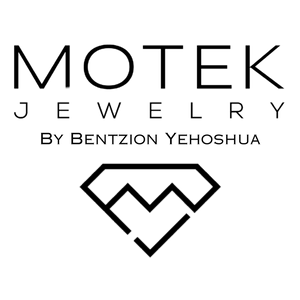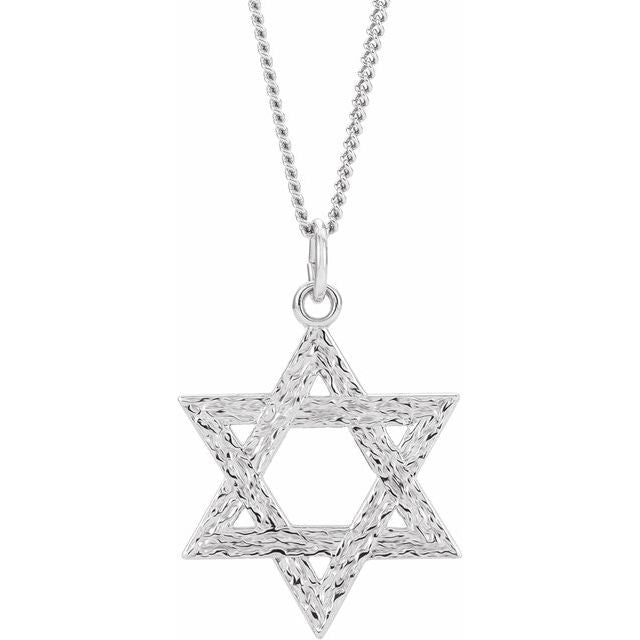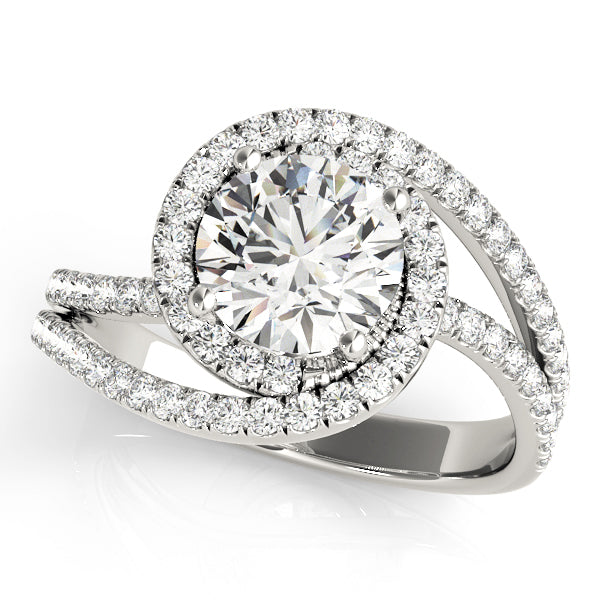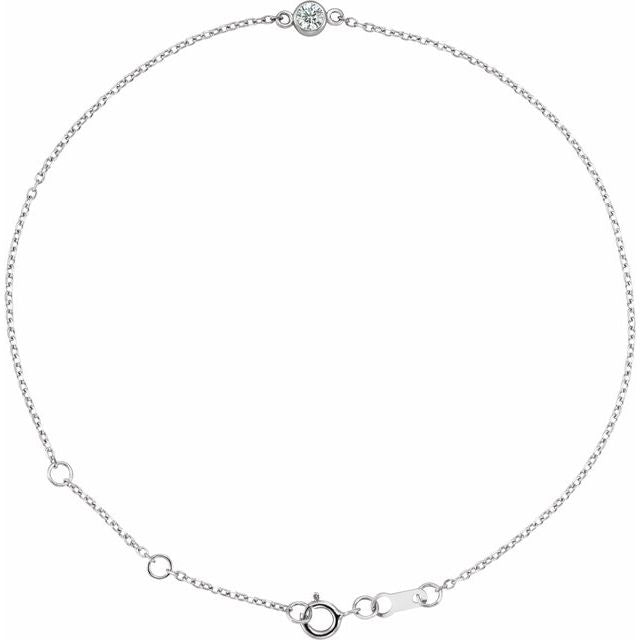Custom Jewelry vs. Mass-Produced: Which is Better?

In a world where personal expression meets consumer choice, the decision between custom jewelry and mass-produced pieces represents more than just a shopping preference—it's a statement about values, aesthetics, and even economics. Whether you're browsing the gleaming displays of a mall jewelry chain or consulting with an artisan in their studio, the jewelry you choose tells a story. But which story do you want to tell? And more importantly, which option truly offers better value, quality, and satisfaction?
As someone who has spent countless hours researching both markets, I've discovered that this question isn't as straightforward as it might initially seem. The answer depends on numerous factors including budget, occasion, personal style, and even ethical considerations. In this comprehensive exploration, we'll delve into the intricate world of jewelry to help you make an informed decision that aligns with your unique circumstances and preferences.

The Allure of Custom Jewelry
There's something undeniably magical about owning a piece of jewelry that exists nowhere else in the world. Custom jewelry carries with it a sense of exclusivity and personal connection that mass-produced pieces simply cannot match. When you commission a custom piece, you're not just buying jewelry—you're participating in a creative process.
The Personal Touch
Custom jewelry begins with a conversation. Whether you're working with an independent artisan or a boutique jeweler, the process typically starts with discussing your vision, preferences, and the story behind the piece. Perhaps you want to incorporate birthstones representing your children, or maybe you're looking to transform a family heirloom into something that better reflects your personal style while honoring its history.
This collaborative approach ensures that the final product resonates with your personal narrative. The jeweler becomes not just a craftsperson but an interpreter of your vision, translating your ideas into tangible form. This relationship adds a layer of meaning to the jewelry that goes far beyond aesthetics.
Quality and Craftsmanship
Custom jewelers typically pride themselves on their craftsmanship. Many have spent years, sometimes decades, perfecting their skills. This expertise often translates into superior attention to detail, from the selection of stones to the precision of settings and finishes.
Take, for example, the process of creating a custom engagement ring. A skilled jeweler will consider not just the appearance of the piece but also its structural integrity, ensuring that the prongs securely hold the stone while maintaining an elegant profile. They might hand-select each diamond or gemstone, examining it under magnification to verify its quality and characteristics rather than relying on standardized grading alone.
This level of care extends to the materials used as well. Custom jewelers often work with higher quality metals and more carefully selected gemstones than what you might find in mass-produced pieces at similar price points. They can also offer more options for ethically sourced materials, which has become increasingly important to conscious consumers.
Design Freedom
Perhaps the most compelling advantage of custom jewelry is the freedom it offers. Rather than being limited to what's available in showcases, you can create exactly what you envision—or something even better with the guidance of a professional designer.
Want a ring that combines art deco elements with contemporary minimalism? Or perhaps a necklace that incorporates a specific symbol meaningful to you? With custom jewelry, these unique combinations are not only possible but encouraged. The design possibilities are virtually limitless, constrained only by physical possibilities and your budget.
This freedom extends to materials as well. While mass retailers might offer a limited selection of gemstones in standard cuts, custom jewelers can source unusual specimens, from rare color variations of popular gems to more obscure stones that rarely appear in commercial jewelry.
The Emotional Value
There's an intangible but significant emotional value to custom jewelry. Knowing that a piece was created specifically for you or your loved one adds a sentimental dimension that can far outweigh the monetary investment.
Consider the difference between purchasing a mass-produced engagement ring and working with a jeweler to create one that incorporates elements meaningful to your relationship. The latter becomes not just a symbol of commitment but a physical embodiment of your unique bond, carrying with it the story of its creation and the thought that went into its design.
This emotional connection often makes custom pieces family treasures that are passed down through generations, carrying stories and memories that commercial jewelry rarely achieves.

The Practicality of Mass-Produced Jewelry
While custom jewelry offers undeniable advantages in terms of personalization and uniqueness, mass-produced jewelry has its own compelling benefits that make it the preferred choice for many consumers in various situations.
Accessibility and Convenience
One of the most obvious advantages of mass-produced jewelry is its accessibility. You can walk into virtually any mall, department store, or browse countless online retailers and find a wide selection of ready-to-wear pieces. This convenience is particularly valuable when you need jewelry quickly for an upcoming event or as a last-minute gift.
The shopping experience itself is also more straightforward. You can see exactly what you're getting, try pieces on immediately, and take them home the same day. There's no waiting period for design consultations, approvals, or fabrication—a process that can take weeks or even months with custom pieces.
This accessibility extends to price points as well. Mass-produced jewelry is available across a broad spectrum of budgets, from affordable fashion pieces to high-end luxury items, making it more accessible to a wider range of consumers.
Consistent Quality Standards
Major jewelry retailers and brands have established quality control processes that ensure consistency across their products. When you purchase a piece from a reputable retailer, you can generally expect it to meet certain standards for materials and craftsmanship.
These companies often have the resources to invest in advanced manufacturing technologies that can achieve precise and consistent results. Computer-aided design (CAD) and manufacturing processes allow for intricate details that might be challenging to execute by hand, while still maintaining uniformity across production runs.
Additionally, established brands typically offer warranties and return policies that provide peace of mind to consumers. If a stone falls out or a clasp breaks, you can often get repairs or replacements with minimal hassle—a service that might be more complicated with independent custom jewelers, especially if they're located far from you.
Trend Alignment
Mass-produced jewelry tends to closely follow current fashion trends. Major manufacturers have dedicated design teams that monitor runway shows, celebrity styles, and emerging cultural influences to create collections that feel contemporary and desirable.
For fashion-conscious consumers who enjoy updating their jewelry collection to reflect current trends, mass-produced pieces offer an affordable way to stay current without the higher investment of custom work. This can be particularly appealing for more trendy or seasonal styles that you might not want to wear for decades to come.
Furthermore, recognizable designs from popular brands can carry their own form of social currency. Wearing a piece that's identifiable as coming from a prestigious brand can make a statement about status and taste in certain social contexts—something that matters to some consumers.
Cost Efficiency
Perhaps the most significant advantage of mass-produced jewelry is its cost efficiency. The economies of scale achieved through large production runs substantially reduce the cost per piece compared to one-off custom creations.
Manufacturing multiple identical items allows companies to optimize their production processes, reduce material waste, and distribute fixed costs (like design and tooling) across many units. These savings are typically passed on to consumers in the form of lower prices compared to custom pieces of similar materials and complexity.
This cost efficiency makes higher-quality materials more accessible to average consumers. For example, you might be able to afford a mass-produced 14k gold necklace from a retail chain, whereas a custom piece in the same material might be outside your budget.
Quality Comparisons: Perception vs. Reality
When comparing custom and mass-produced jewelry, quality is often a central consideration—but the reality is more nuanced than many consumers realize.
Materials: The Great Equalizer
Both custom and mass-produced jewelry can use identical materials. The same 14k gold, the same VS1 diamonds, the same AAA-grade sapphires can appear in both custom and commercial pieces. The difference lies not necessarily in what materials are used, but in how they're selected and implemented.
Custom jewelers often have the advantage of hand-selecting each component, examining gemstones individually for optimal color, clarity, and cut beyond what standard grading might indicate. They might also offer more options for metal alloys or alternative materials that aren't commonly available in mass retail.
However, large jewelry manufacturers have their own advantages. Their substantial purchasing power can give them access to high-quality materials at better prices, and their established relationships with suppliers can provide consistency in sourcing. Some luxury brands are even vertically integrated, controlling their supply chain from mining to retail.
Craftsmanship: Hand vs. Machine
The debate between hand craftsmanship and machine precision is central to the quality comparison. Custom jewelry is often associated with traditional handcrafting techniques, which can impart subtle variations and character that some consider superior to machine-made uniformity.
A hand-fabricated setting might be adjusted to perfectly accommodate the specific dimensions of an individual stone, while a hand-finished surface might have a warmth and depth that differs from machine polishing. These nuances can be appreciated by connoisseurs and can contribute to the unique character of a piece.
However, modern manufacturing technologies have advanced tremendously. Computer-controlled cutting and setting can achieve precision that's difficult for even the most skilled human hands to match consistently. Techniques like 3D printing in wax followed by traditional casting combine technological precision with time-tested jewelry-making methods.
The reality is that both approaches have their merits. The highest quality often comes from combining the precision of technology with the discerning eye and finishing skills of an experienced jeweler—something that can occur in both custom and high-end mass-produced contexts.
Durability and Longevity
A well-made piece of jewelry should last for generations, regardless of whether it's custom or mass-produced. The factors that determine durability are largely the same: proper metal alloys, secure stone settings, appropriate design for the intended use, and quality finishing.
Custom jewelers might have an edge in creating pieces specifically engineered for an individual's lifestyle and wearing habits. For instance, they might recommend a lower profile setting for someone who works with their hands or reinforce areas that will experience the most stress based on how the piece will be worn.
Mass manufacturers, meanwhile, have the advantage of extensive testing and refinement. Popular designs might go through multiple iterations to address any structural weaknesses before reaching the market. They can also leverage data from customer feedback and returns to improve future productions.
The Price Equation: Value Beyond the Tag
The price difference between custom and mass-produced jewelry can be substantial, but understanding what you're paying for helps determine which option offers better value for your specific situation.
Breaking Down the Custom Premium
Custom jewelry typically commands a higher price than comparable mass-produced pieces, often by a significant margin. This premium reflects several factors:
Labor is perhaps the most significant component. Custom pieces require one-on-one consultations, individual design work, and dedicated crafting time that can't be distributed across multiple sales. A skilled jeweler might spend 20-40 hours or more on a single complex piece.
The design process itself represents a substantial investment. Creating original designs, making modifications based on client feedback, and producing models or renderings all require time and expertise that must be compensated.
Small-batch material sourcing also affects pricing. While large manufacturers can purchase materials in bulk at discounted rates, custom jewelers often buy smaller quantities at higher per-unit costs, particularly for specific gemstones or unusual materials requested by clients.
Additionally, custom jewelers typically operate with higher overhead relative to their sales volume. A retail chain can distribute the cost of store operations across hundreds of daily transactions, while a custom studio might complete only a few pieces per week.
The Hidden Costs of Mass Production
While mass-produced jewelry is generally less expensive at the point of purchase, there are hidden costs to consider:
Marketing and branding costs are built into the price of branded jewelry, sometimes accounting for a substantial percentage of what you pay. You're not just buying the physical product but also the prestige and recognition associated with the name.
Retail markup is another significant factor. Jewelry sold through traditional retail channels often carries a markup of 100% to 300% or more over the wholesale cost to cover store operations, staff, inventory carrying costs, and profit margins.
The standardization necessary for mass production sometimes results in compromises. Settings might be designed to accommodate a range of stone sizes rather than perfectly fitting each individual gem, or designs might be simplified to facilitate efficient manufacturing.
Long-Term Value Considerations
When assessing value, it's important to consider not just the initial purchase price but the long-term satisfaction and utility of the piece:
Resale value tends to favor custom jewelry with exceptional craftsmanship or unique design elements. While most jewelry depreciates after purchase, generic mass-produced pieces typically lose more of their value than well-executed custom work, particularly if the custom piece comes from a recognized artisan.
Emotional durability—how long you'll want to wear and keep the piece—often favors custom jewelry. Because it's designed specifically to your taste and preferences, you're less likely to tire of it as trends change.
Adaptability can also affect long-term value. Some custom jewelers design pieces with future modifications in mind, allowing the jewelry to evolve with changing tastes or circumstances. For example, a custom ring might be designed to allow additional stones to be added on significant anniversaries.
Ethical Considerations: The Hidden Story Behind Your Jewelry
In recent years, ethical sourcing has become an increasingly important factor for many jewelry consumers, adding another dimension to the comparison between custom and mass-produced options.
Traceability and Transparency
Custom jewelers often have advantages when it comes to material traceability. Working on a smaller scale allows them to develop direct relationships with specific suppliers and to carefully select materials based on their sourcing practices.
Many independent jewelers have made ethical sourcing central to their business model, offering recycled metals, Kimberley Process-certified diamonds, or gemstones with documented chains of custody. They can often provide detailed information about exactly where and how their materials were obtained.
Some larger companies have also made significant strides in this area. Tiffany & Co., for example, has developed extensive protocols for responsible mining and transparency, while brands like Brilliant Earth have built their entire business around ethically sourced materials.
However, the complexity of global supply chains makes complete transparency challenging, particularly for mass manufacturers producing at scale. The more steps between the mine and the finished piece, the more difficult it becomes to verify ethical practices throughout the process.
Environmental Impact
The environmental footprint of jewelry production varies widely depending on specific practices rather than simply whether a piece is custom or mass-produced.
Mining for new precious metals and gemstones has significant environmental impacts regardless of scale. However, custom jewelers may be more likely to offer recycled metals and repurposed stones, which substantially reduce environmental harm.
Manufacturing processes also affect environmental impact. Traditional handcrafting techniques generally use less energy than industrial production, but modern mass manufacturing can achieve efficiencies of scale that reduce per-piece resource consumption.
Some custom jewelers have embraced environmentally friendly practices like using non-toxic alternatives to traditional chemicals, implementing water recycling systems, and minimizing waste. Similarly, some larger companies have invested in reducing their carbon footprint and implementing sustainable practices across their operations.
Labor Practices
Ethical labor practices are critical considerations in jewelry production. Custom jewelry made locally often provides greater assurance about fair labor conditions, as you can directly interact with the artisans creating your piece.
Mass-produced jewelry, particularly at lower price points, may involve complex global supply chains with varying labor standards. However, many established brands have implemented monitoring systems and certifications to ensure ethical practices throughout their production process.
The Responsible Jewellery Council (RJC) certification, which addresses human rights, labor rights, environmental impact, and business ethics, has been adopted by many larger companies as well as some custom jewelers, providing a standard for comparison across the industry.
Making Your Decision: A Personalized Approach
With all these factors in mind, how do you decide whether custom or mass-produced jewelry is right for your specific situation? Consider the following framework to guide your decision:
When Custom Jewelry Makes More Sense
Custom jewelry is often the better choice when:
You have a specific vision that you can't find in existing products. If you've searched extensively and can't find exactly what you want, custom creation is the natural solution.
The piece has significant emotional or symbolic importance. For milestone jewelry like engagement rings, anniversary gifts, or memorial pieces, the additional meaning that comes from custom creation often justifies the higher investment.
You value the relationship with the creator. Working with an artisan creates a connection not just to the jewelry but to the person who made it, adding another layer of meaning to the piece.
You have unusual requirements. If you have metal allergies, need specific adaptations for comfort or functionality, or want to incorporate personal materials (like a family gemstone), custom work provides solutions that mass retail rarely can.
You're looking for a truly unique piece that no one else will have. If exclusivity is important to you, custom is the clear winner.
When Mass-Produced Jewelry Makes More Sense
Mass-produced jewelry often makes more sense when:
You need something quickly. If you don't have weeks or months to wait for a custom piece to be created, ready-made is your only option.
Your budget is limited. If you have a strict budget that won't accommodate custom work in the materials you want, quality mass-produced pieces offer good alternatives.
You're following current trends. For fashion jewelry that you might not wear for many years, the lower investment of mass-produced pieces is often more practical.
You want the prestige of a recognized brand. If wearing a piece from a specific brand is important to you for its recognition value, then mass-produced from that brand is the obvious choice.
You prefer the security of standardized quality and return policies. Established retailers typically offer straightforward guarantees and service policies that can provide peace of mind.
Hybrid Approaches
It's worth noting that the line between custom and mass-produced is not always clear-cut. Many options exist in the middle ground:
Semi-custom jewelry allows you to personalize existing designs by selecting different metals, stones, or dimensions. This approach offers some personalization while keeping costs lower than fully custom work.
Made-to-order production combines elements of both approaches. The design is standardized, but each piece is made individually when ordered rather than produced in large batches in advance.
Customization services from larger retailers are increasingly common. Many major jewelry brands now offer some degree of personalization, from engraving to component selection.
Limited edition pieces from major manufacturers offer some of the exclusivity of custom work with the reliability of established brands.
Conclusion: The Better Choice Is Personal
After exploring all aspects of custom versus mass-produced jewelry, the answer to "which is better?" ultimately comes down to: it depends on what matters most to you.
If uniqueness, personal meaning, and direct connection to the creation process are your priorities, custom jewelry offers values that mass production simply cannot match. The premium price buys you not just materials and craftsmanship but also the intangible benefits of exclusivity and personal expression.
If convenience, predictability, and maximizing material quality within a specific budget are your main concerns, mass-produced jewelry from reputable retailers offers tremendous value and satisfaction.
Many jewelry enthusiasts ultimately find that their collection includes both types—custom pieces for significant life moments and personal expression, complemented by well-chosen mass-produced pieces for variety and everyday wear.
The most important factor is making an informed choice that aligns with your personal values, practical needs, and the specific role you want each piece of jewelry to play in your life. Whether handcrafted by an artisan or precisely manufactured by a global brand, the best jewelry is ultimately the piece that brings you joy every time you wear it.
References
Bario Neal. "Ethical Sourcing." https://bario-neal.com/ethical-sourcing
Brilliant Earth. "Beyond Conflict Free Diamonds." https://www.brilliantearth.com/conflict-free-diamonds/
Cartier. "Our Commitments." https://www.cartier.com/en-us/maison/commitments/sustainability.html
Fairtrade Foundation. "Gold." https://www.fairtrade.org.uk/buying-fairtrade/gold/
Jewelers of America. "Responsible Jewelry Practices." https://www.jewelers.org/ja/advocacy/responsible-jewelry-practices
Kimberley Process. "About." https://www.kimberleyprocess.com/en/about
No Dirty Gold. "The Golden Rules." https://nodirtygold.earthworks.org/retailers/golden_rules
Responsible Jewellery Council. "Standards." https://www.responsiblejewellery.com/standards/
Tiffany & Co. "Responsible Mining." https://www.tiffany.com/sustainability/product/responsible-mining/
World Gold Council. "Gold and Climate Change." https://www.gold.org/about-gold/gold-supply/responsible-gold/gold-and-climate-change





















